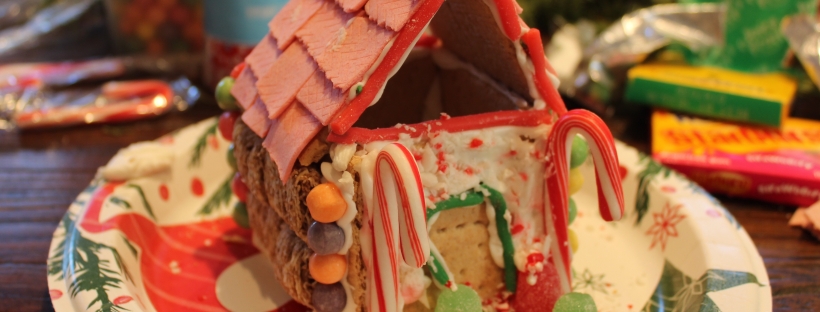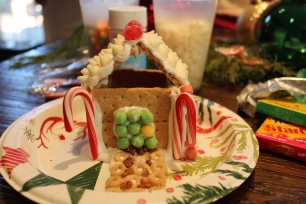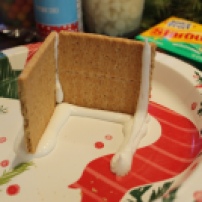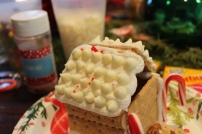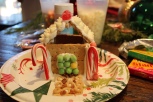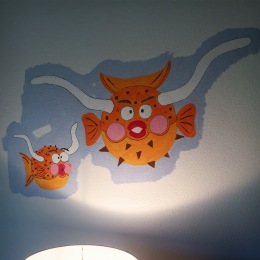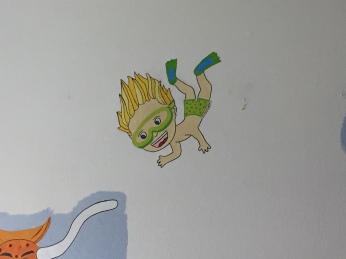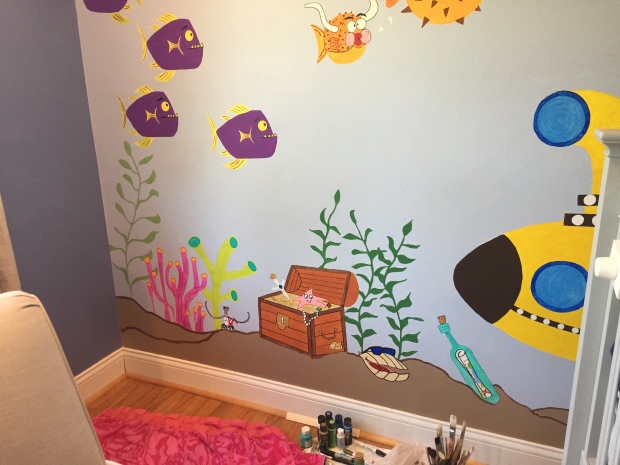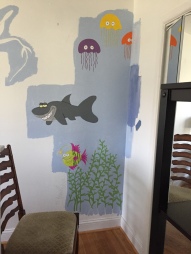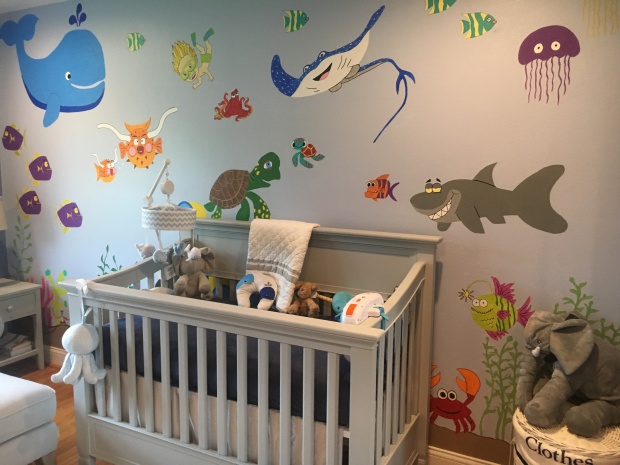There are so many toys and gadgets out there that promote “learning” or “skills development” in infants. On top of that is all of the advice, “If you don’t do x by his first birthday you might as well quit now!” We don’t really need to go into examples; you all know what we are talking about.
With the excess of information it can be hard to sort through it all to figure out what works for you, but T decided to try one she’d read about – a sensory bottle. (M said – “a what???”) You may ask- Why make a sensory bottle when my kid is just as happy with the empty potato chip bag? It’s a good question. T’s son loves an empty chip bag, and it’s a super cheap toy. But she also wants to expose him to other sensory items and she loves to craft so why not.
After countless hours of googling and reading advice, T finally decided to give these sensory bottles a try. Mostly because she had all of the equipment at home and didn’t need to go to the store. M, for her part, doesn’t really “get” the sensory bottles. She understands the concept behind them, and admittedly thinks they are very pretty. But she disagrees with some of the advice that comes with them – “You must have your kids play with sensory bottles or they will never graduate from preschool!” M thinks sensory bottles might just be a new invention to stress out/guilt parents. Particularly working parents and/or parents with multiple kids. 🙂
So we give you this craft with our own advice: Do it because you like crafting, or because it’s fun, or because you wanted something to do with your kids. Don’t do it just because someone told you your kid would fall behind if he or she was not exposed to sensory bottles at a young age.
We are actually going to show you two slightly different bottles. The first one creates a “galaxy effect”. The second one is more of a traditional sensory bottle in that you can shake it and the items in the center float around like a lava lamp.

Easy Basic Sensory Bottle
- Glitter*
- Clear Glue
- Water
- Plastic Bottle
- Items to float (I used jewels, marbles, and purple mesh tubing
*M: Good Lord, Tanner, who wants glitter in their house???)
Step 1: Fill bottle about half way with water. Then pour in your entire bottle of clear glue. Close the cap on the bottle and shake until combined.

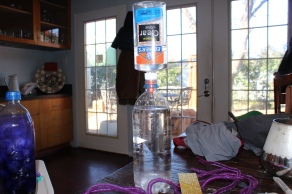
Step 2: Add some glitter and your objects to the bottle. Top off with water if needed.
Step 3: Seal the cap back on tight. (You can tape this down or glue it if needed.) Shake until glue and water are combined and Tah Dah!

Galaxy Bottle
- Plastic Bottle
- Baby Oil*
- Glitter
- Purple and blue food coloring
- Cotton balls
- Straw
- Water
*I used sunflower oil because that’s what I had. I think baby oil would be better.
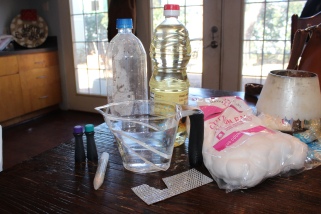
Step 1: Fill a measuring cup with about 1 1/2 C. of water. Drop blue and purple drops of food coloring in until you get a nice indigo color (or whatever color makes you happy!) I used about 6 drops of purple and 4 drops of blue.

Step 2: Fill your plastic bottle about half way with oil. Add your water so the plastic bottle is now about 3/4 of the way full. Secure the lid and shake until the water and oil have mixed some.


Step 3: Open it back up. Slightly unravel your cotton balls and start stuffing them in. I used the straw to push them to the bottom. I used about 1/3 of the bag of cotton balls.
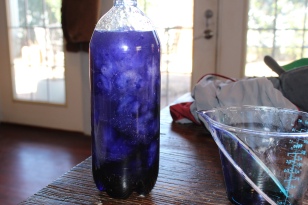
Step 4: Put your lid back on and shake until combined.
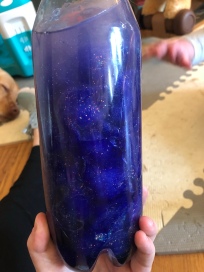
** You can add other items to your galaxy if you want. Just use a little less water and oil so there is room. I added silver mesh tubing as something my son can find when playing with it.
Happy Crafting!
xoxo, T&M

